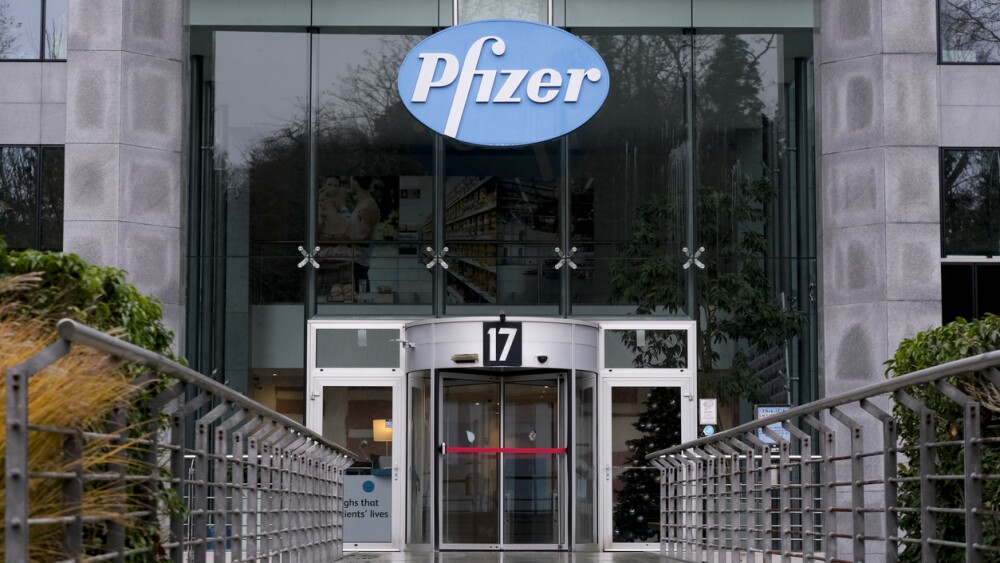Today at the Alzheimer’s Association International Conference© (AAIC© 2021), Eli Lilly and Company (NYSE: LLY) presented two new exploratory analyses of data from the Phase 2 TRAILBLAZER-ALZ study. In the first, greater amyloid plaque changes following donanemab treatment was highly associated with less cognitive decline and participants with greater plaque clearance at 24 weeks of treatment showed less tau progression
|
INDIANAPOLIS, July 29, 2021 /PRNewswire/ -- Today at the Alzheimer's Association International Conference© (AAIC© 2021), Eli Lilly and Company (NYSE: LLY) presented two new exploratory analyses of data from the Phase 2 TRAILBLAZER-ALZ study. In the first, greater amyloid plaque changes following donanemab treatment was highly associated with less cognitive decline and participants with greater plaque clearance at 24 weeks of treatment showed less tau progression. In the second, Lilly shared data showing that treatment with donanemab drives a rapid reduction of a biomarker reflecting Alzheimer's disease pathology, plasma P-tau217, which was detected within 12 weeks. Donanemab is an investigational antibody that targets a modified form of beta amyloid plaque called N3pG. In June 2021, Lilly announced the U.S. Food and Drug Administration (FDA) had granted Breakthrough Therapy designation for donanemab based on the Phase 2 data. No additional safety analyses were performed related to the presentations; for information on donanemab's safety profile, reference the previous publication. "We are excited by these promising results, which provide further evidence on the potential for donanemab to slow disease progression for people with early symptomatic Alzheimer's disease," said Mark Mintun, M.D., vice president of pain and neurodegeneration, Lilly. "Importantly, these data link the mechanism of action of donanemab, plaque clearance, with positive effects on both clinical outcomes and brain tau pathology." In the first oral presentation, donanemab induced rapid amyloid plaque reduction at 24 weeks in participants with early symptomatic AD, with the most rapid clearance in subjects with the most severe plaque burden at baseline. The subset of participants who reached complete amyloid plaque clearance at 24 weeks (defined as an amyloid level of <24.1CL) were able to stop or reduce dosing of donanemab earlier than other patients. Among those who achieved complete amyloid plaque clearance at 24 weeks and had a blinded switch to placebo, an exposure-response model showed minimal amyloid re-accumulation over the next year. Additionally, among those who reached early complete amyloid plaque clearance status at 24 weeks, a flortaucipir positron emission tomography (PET) scan at 76 weeks showed a significant decrease of tau spread – a predictive biomarker for AD progression – over 76 weeks in frontal, parietal and temporal brain regions compared to placebo. Greater amyloid plaque change at 24 weeks was also associated with improved Integrated Alzheimer's Disease Rating Scale (iADRS) score, a validated, composite measure that combines two well-established instruments used to assess cognition and daily function in AD clinical trials. Additionally, pharmacokinetic/pharmacodynamic modeling showed that greater relative amyloid plaque clearance was correlated with greater clinical benefit. A second oral presentation focused on plasma P-tau217 (tau phosphorylated at threonine 217), a research blood-biomarker developed by Lilly, associated with amyloid and tau pathology and diagnosis of Alzheimer's disease. Planned analyses showed that treatment with donanemab resulted in early reduction of P-tau217 (LS mean log10 change -0.04) and showed significant reduction (p<0.01) by the 3-month timepoint compared to placebo (LS mean log10 change 0). Decreased P-tau217 correlated significantly with amyloid change at all timepoints, at 24 weeks (R = 0.394, p<0.0001) and 76 weeks (R = 0.492, p<0.0001). "Notably, these data support the amyloid cascade hypothesis and suggest that amyloid-related tauopathy can be altered with donanemab's impact on plaque clearance. Furthermore, the data support that early and profound amyloid clearance may translate into clinical benefit for patients," said John Sims, senior medical director of neurodegeneration and co-author of the analysis. About Donanemab About TRAILBLAZER-ALZ Donanemab is also being studied in the ongoing Phase 3 TRAILBLAZER-ALZ 2 study in early, symptomatic Alzheimer's disease patients. TRAILBLAZER-ALZ 3, a prevention study, will evaluate whether treatment with donanemab can prevent the clinical progression of Alzheimer's disease in trial participants before clinical impairment begins. Visit LillyMemoryTrials.com for additional information on enrolling in Alzheimer's disease trials. About Alzheimer's Disease In an addition to age and family history of AD, the greatest risk factor for developing AD is the presence of the apolipoprotein E ε4 (APOE4) allele.1 Having one APOE4 allele increases the risk of developing Alzheimer's disease by approximately three times compared with those with two copies of the APOE3 form. Those who inherit two copies of the APOE4 allele have an 8 - 12-fold risk. In addition, those with the APOE4 allele are more likely to have beta-amyloid accumulation and Alzheimer's dementia at a younger age than those with the APOE2 or APOE3 forms of the APOE gene. About Eli Lilly and Company Lilly Cautionary Statement Regarding Forward-Looking Statements
SOURCE Eli Lilly and Company |
||||||
Company Codes: NYSE:LLY |





